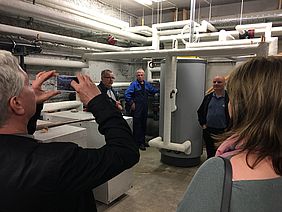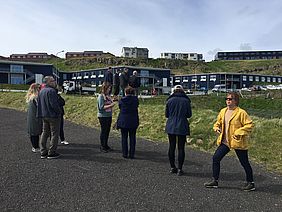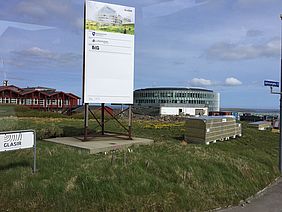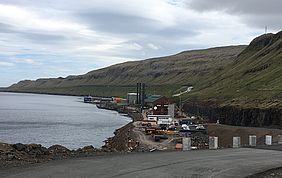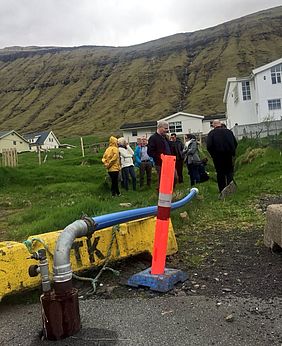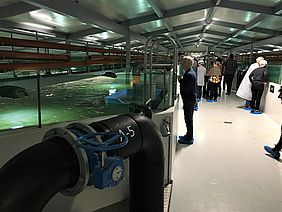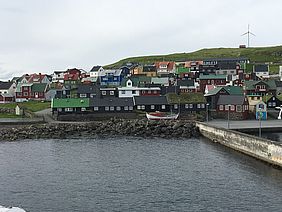The 22nd and 23rd of May 2018, Umhvørvisstovan Environment Agency has hosted a project event to discuss partnership’s progress and to showcase their local good practices and expertise. On one hand, SECURE partners have discussed about the ongoing project activities and how to implement transnational low carbon actions, one of the last steps of this interregional project that will end in April 2019.
On the other hand, partners got the opportunity to learn more about energy practices in this archipelago in the North Atlantic Sea. Among others, they visited the University of the Faroe Islands to see the heat pump installations in the Faculty of Health and Medical Sciences; Boðanesheimið, a 64-apartment retirement home complex heated by water-to-air heat exchangers; and the building of Glasir Tórshavn College, the largest college and upper secondary school in the Faroe Islands that is currently under construction.
Afterwards, they travelled to Husahagi wind park and battery storage facility operated by SEV, a municipally-owned power utility. Terji Nielsen, Head of R&D Department in the electrical company, explained to the partnership how they are working towards 100% renewables. According to Nielsen, they are planning to be 100% renewable by 2030, having “huge plans” for wind and energy storage. To achieve this goal, they have identified the four main renewable resources: an average of wind speed of more than 10m/s, precipitation of more than 1.284mm/year, peak tidal velocities of 3.5m/s and an average of sun hours of 1.000hrs/year. By 2030 they are expecting the following achievements:
- Further integration of wind (projected 20MW every second year until 2030).
- Integration of solar PV (approximately 80MW until 2030).
- Optimization of existing hydro power plants.
- Following tidal stream technologies and costs closely.
- Intelligent and autonomous overall control system.
SECURE partners also visited the construction of the new power plant, 10 km outside from Thórshavn. This plant will be a Heavy Fuel Oil-fired application to provide environmentally responsible power supply to the Faroe Islands. Afterwards, the partnership travelled to a hot drill hole (27°C), where some geothermal wells are being drilled for home heating, on their way to visit the salmon smolt farming station Marine Harvest. The Faroese aquaculture industry is a very important part of the economy of Faroe Islands and from this station they highlighted their commitment to sustainability when producing and distributing salmon. “Marine Harvest continually engages with key stakeholders to ensure the constant improvement of regulations and environmentally and socially responsible practices”.
Finally, SECURE partners visited the island of Nólsoy where a small-scale community is developing some wind projects, with annual average wind speeds of >10m/s.
Do you have any questions? Please feel free to contact Bjarti Thomsen from Umhvørvisstovan Environment Agency of Faroe Islands.


